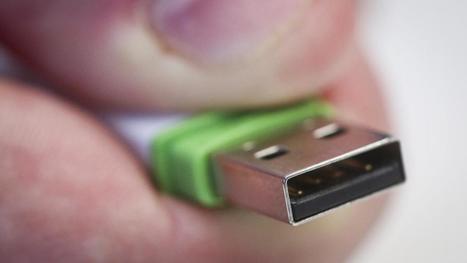Durch eine kleine Änderung in den Standardeinstellungen macht Microsoft einen lästigen Zwischenschritt überflüssig: USB-Sticks können jetzt einfach herausgezogen werden. Vorher drohte ohne sicheres Entfernen ein Datenverlust.
Bei der Benutzung eines USB-Sticks galt bislang die Regel: Erst sicher auswerfen, dann aus dem Computer entfernen. Nur nach den zusätzlichen Mausklicks konnte ein Datenverlust sicher vermieden werden. Nach einer kleinen Änderung ist das nun nicht mehr notwendig, teilte Microsoft in seinem Windows-Blog mit. Den USB-Stick einfach rauszuziehen sei bei der Nutzung von Windows 10 jetzt sicher.
Learn more / En savoir plus / Mehr erfahren:
https://www.scoop.it/t/free-tutorials-in-en-fr-de/?&tag=windows10
Via Gust MEES, Juergen Wagner



 Your new post is loading...
Your new post is loading...












Durch eine kleine Änderung in den Standardeinstellungen macht Microsoft einen lästigen Zwischenschritt überflüssig: USB-Sticks können jetzt einfach herausgezogen werden. Vorher drohte ohne sicheres Entfernen ein Datenverlust.
Bei der Benutzung eines USB-Sticks galt bislang die Regel: Erst sicher auswerfen, dann aus dem Computer entfernen. Nur nach den zusätzlichen Mausklicks konnte ein Datenverlust sicher vermieden werden. Nach einer kleinen Änderung ist das nun nicht mehr notwendig, teilte Microsoft in seinem Windows-Blog mit. Den USB-Stick einfach rauszuziehen sei bei der Nutzung von Windows 10 jetzt sicher.
Learn more / En savoir plus / Mehr erfahren:
https://www.scoop.it/t/free-tutorials-in-en-fr-de/?&tag=windows10